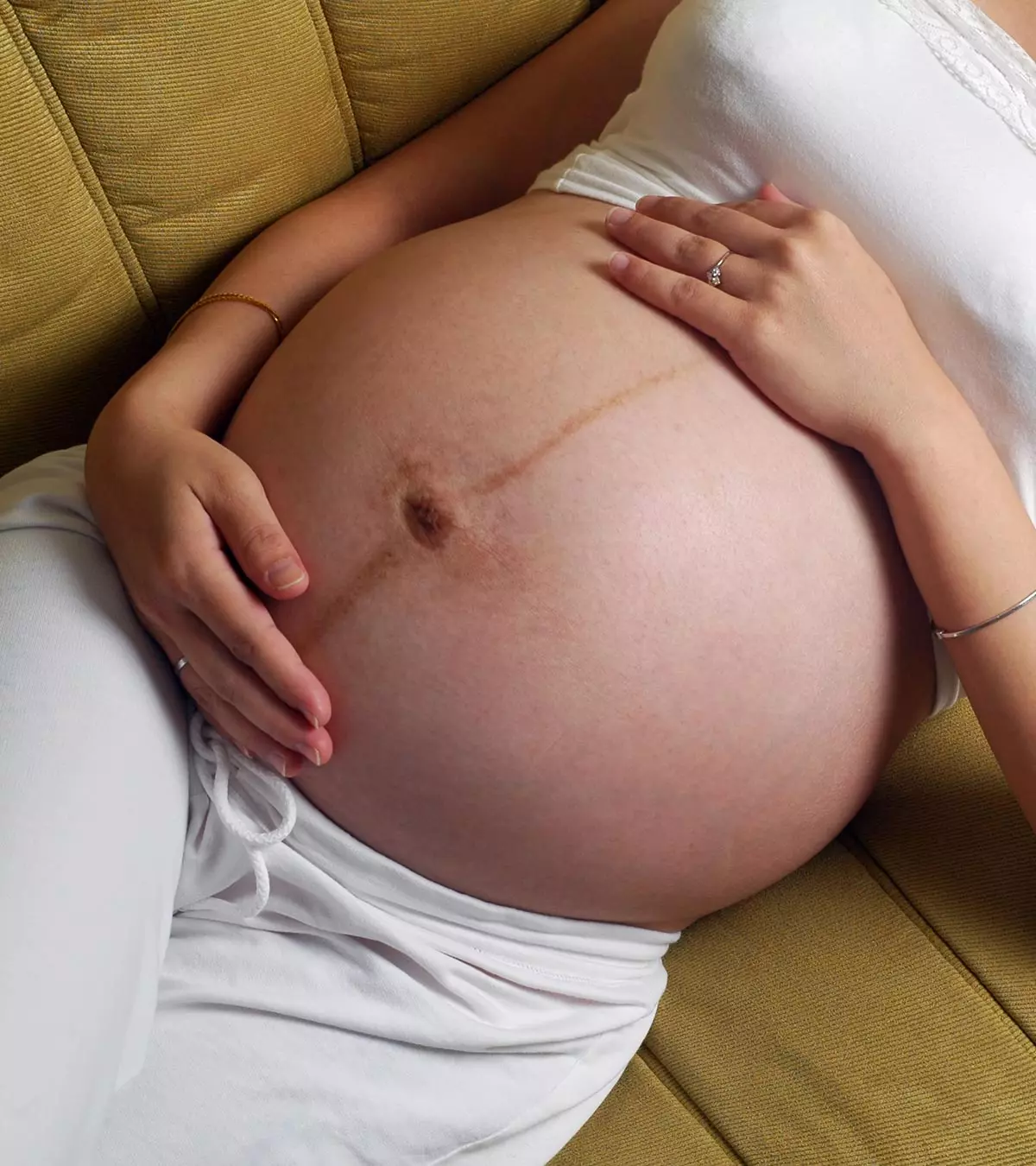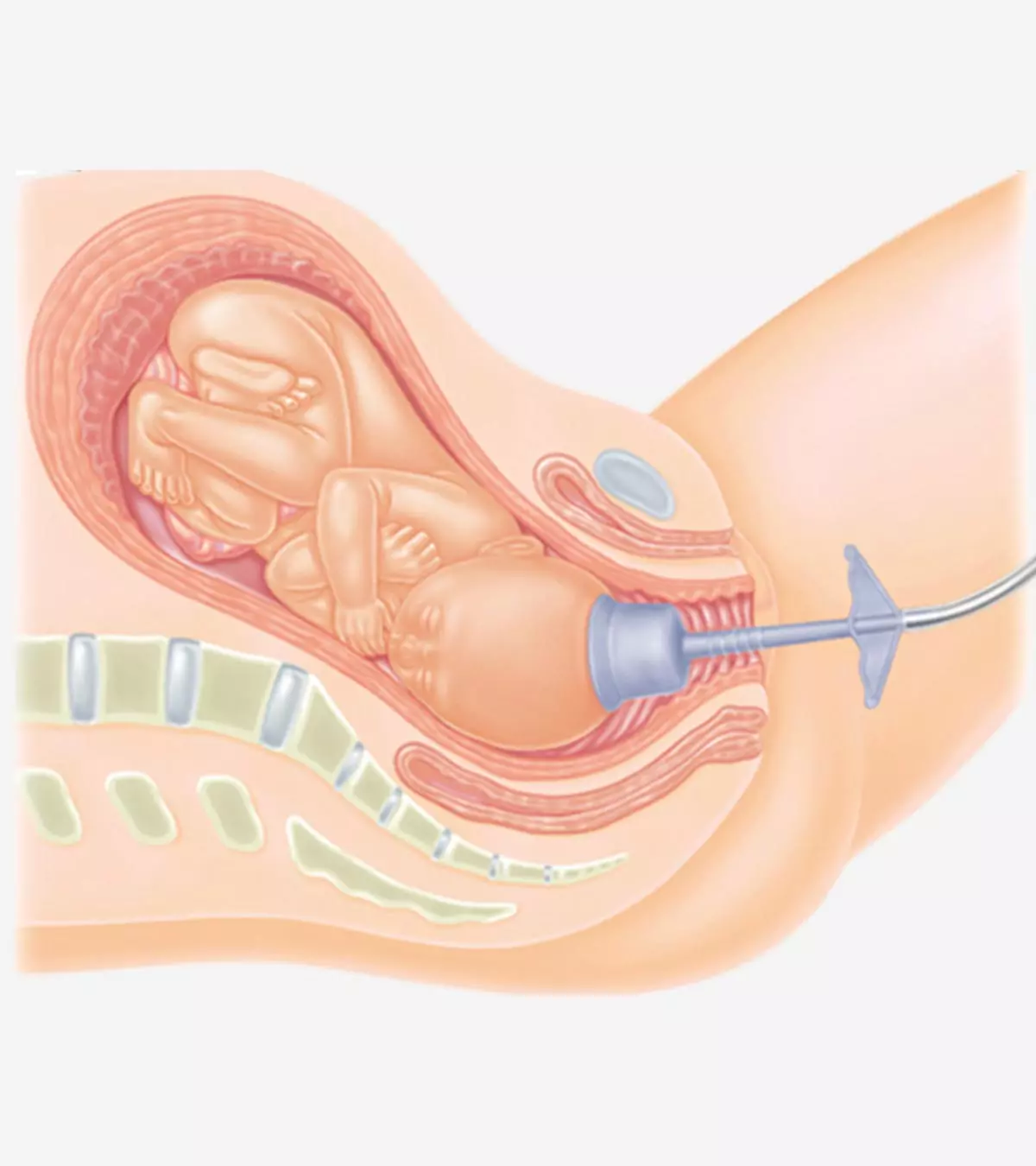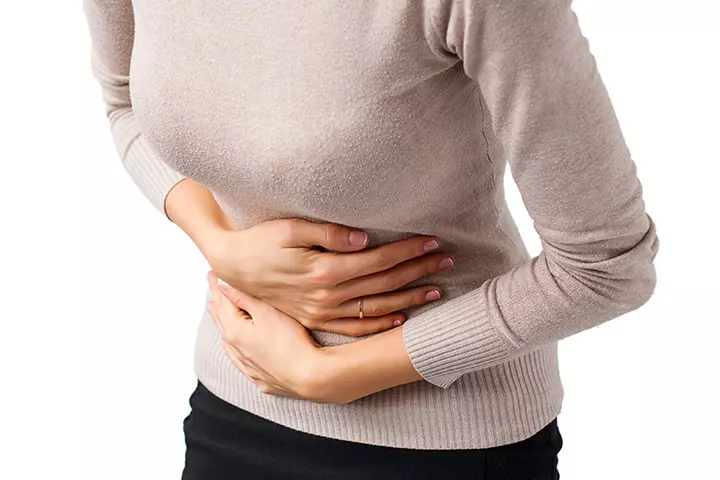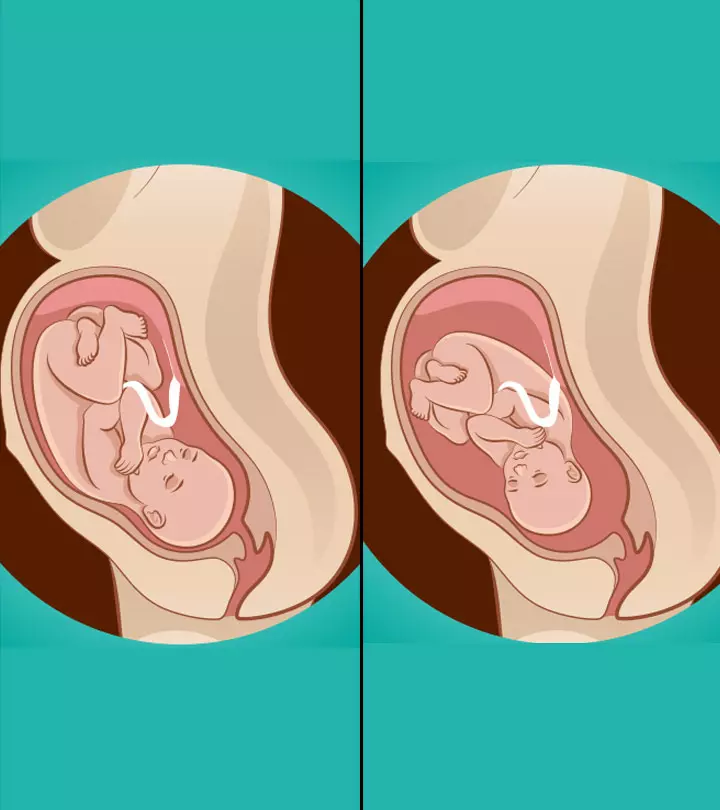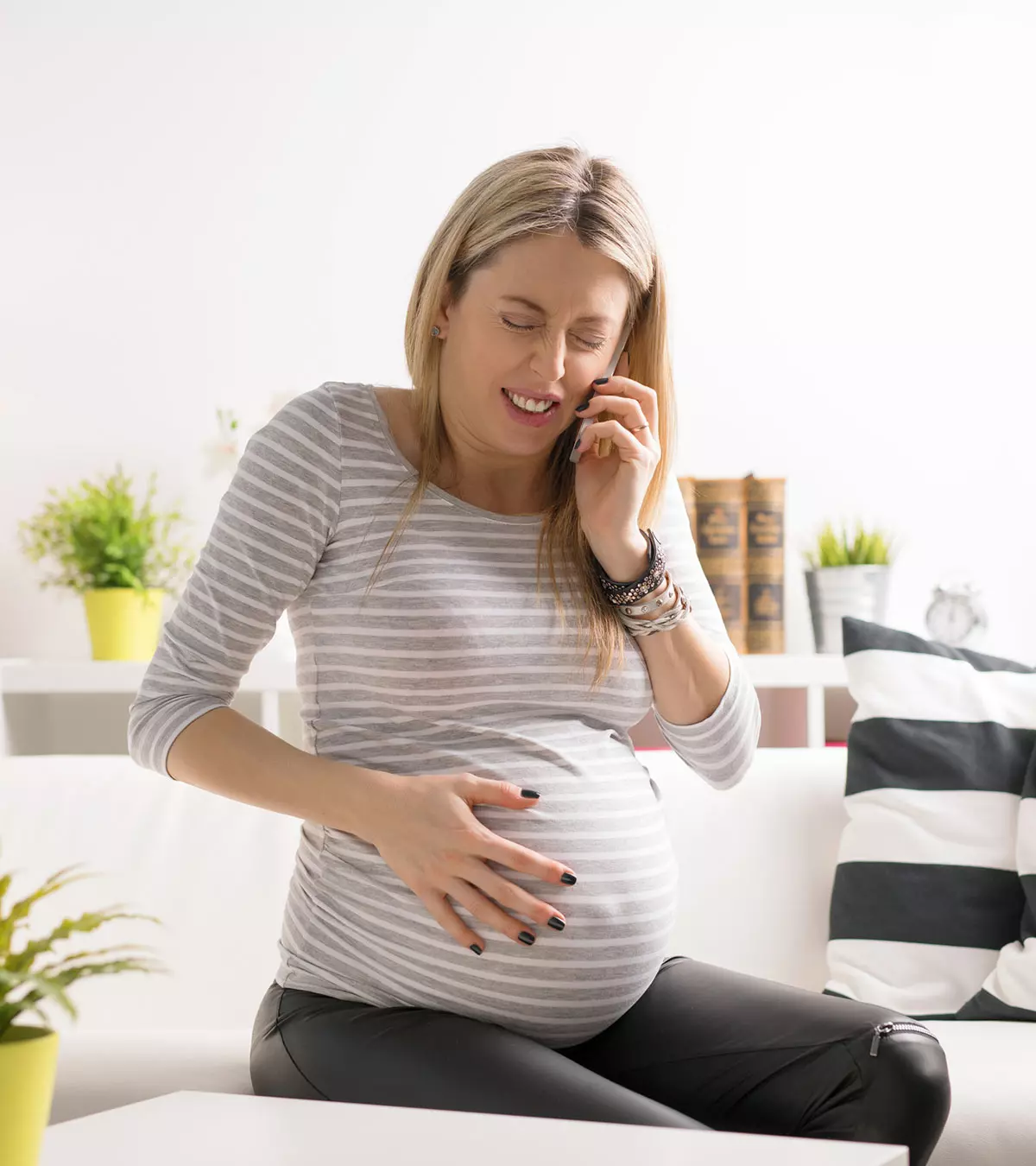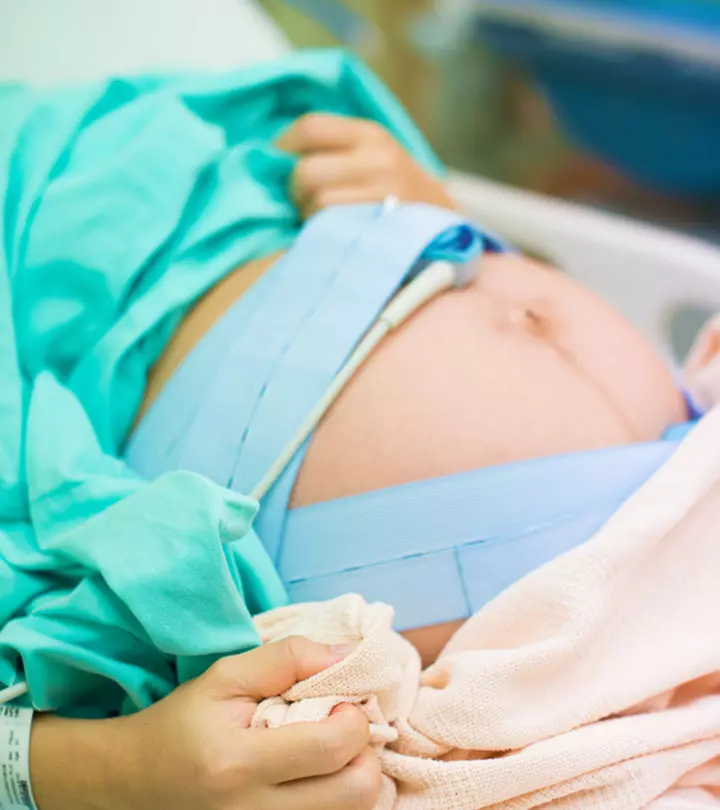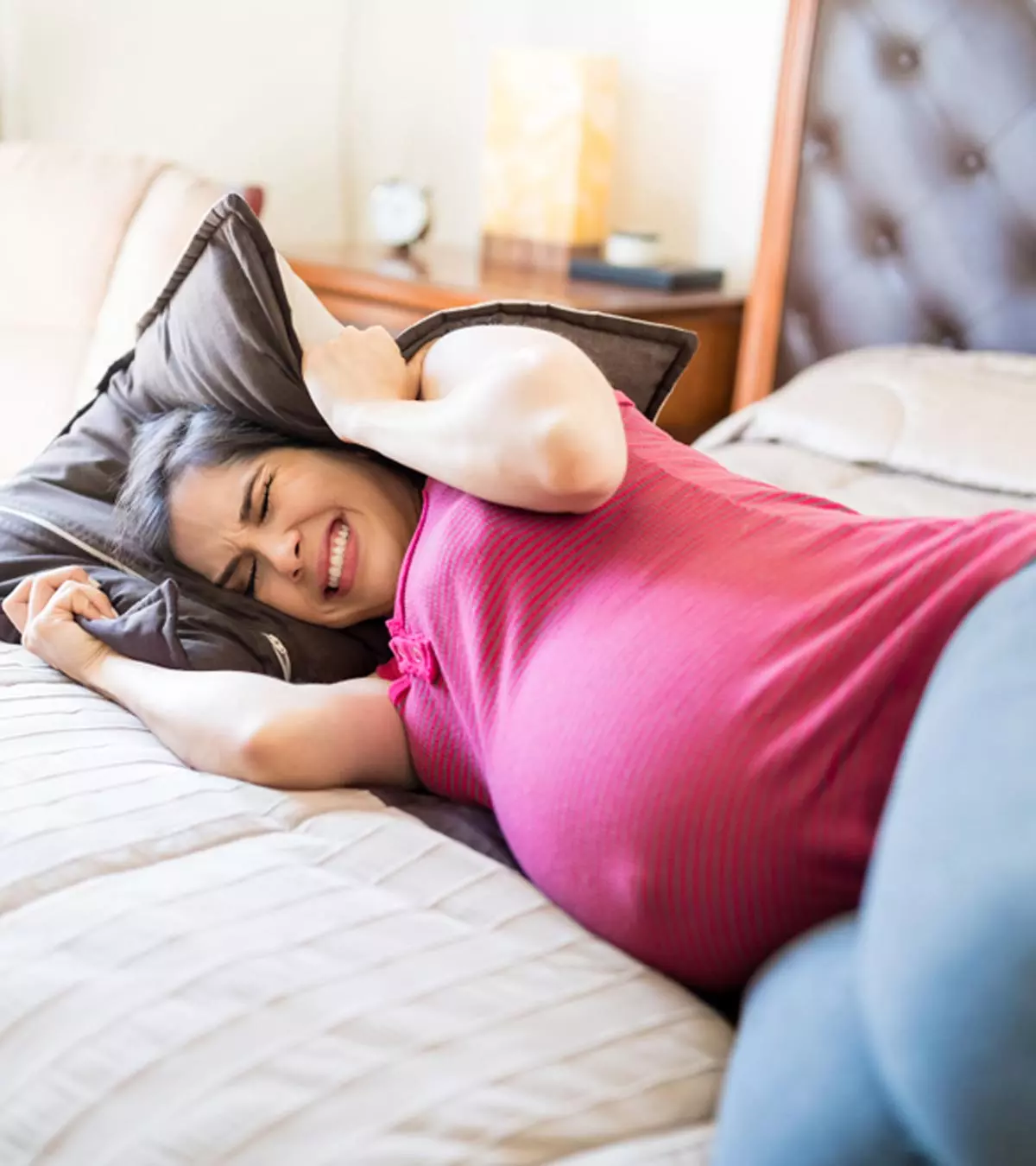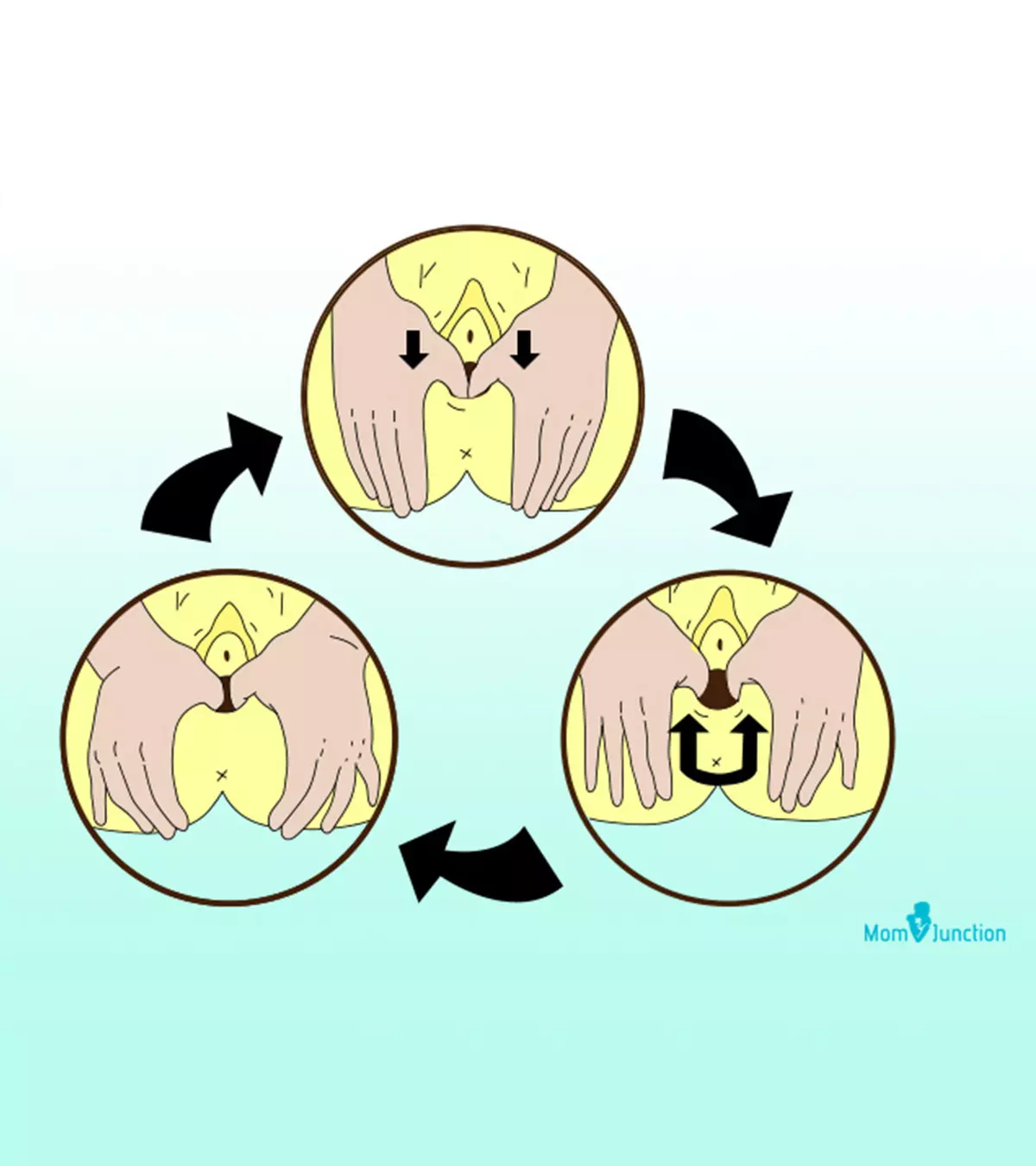
Image: ShutterStock
Approximately 85% of women who choose vaginal birth experience perineal damage. The condition occurs due to a tear during childbirth (1). However, a prenatal perineal massage may help you avoid perineal tears and the accompanied pain and trauma after delivery.

Various studies demonstrate the benefits of perineal massage for labor in preventing a tear in the perineum. Read this post to know what perineal massage is, the techniques to use, its benefits, and how it works.
Key Pointers
- Perineal damage is experienced by approximately 85% of women who choose vaginal birth.
- Prenatal perineal massage can help prevent perineal tears and reduce pain and trauma after delivery.
- Perineal massage improves flexibility, suppleness, and blood circulation, and decreases the need for an episiotomy.
- The best time to start antenatal perineal massage is in the 34th week of pregnancy.
- If you have preeclampsia, placenta previa, incompetent cervix, or vaginal infections, avoid perineal massage.
What Is The Perineum?
The delicate area between the anus and the vagina is called the perineum. It is prone to tears during a vaginal delivery, as the baby applies pressure while moving through the birthing canal. The tears, if tiny, will heal soon but deep lacerationsiA wound formed when soft body tissues are torn or cut. that need stitches will take time to heal. In the case of first-time moms, healing takes time.
 Quick fact
Quick factWhat Is Perineal Massage?
During the delivery, the perineum tissues need relaxation and opening up to facilitate a smooth descent of the baby. A massage stretches the muscles to improve the flexibility of the perineum during childbirth, thus minimizing the chances of a tear.
What Are The Benefits Of A Prenatal Perineal Massage?
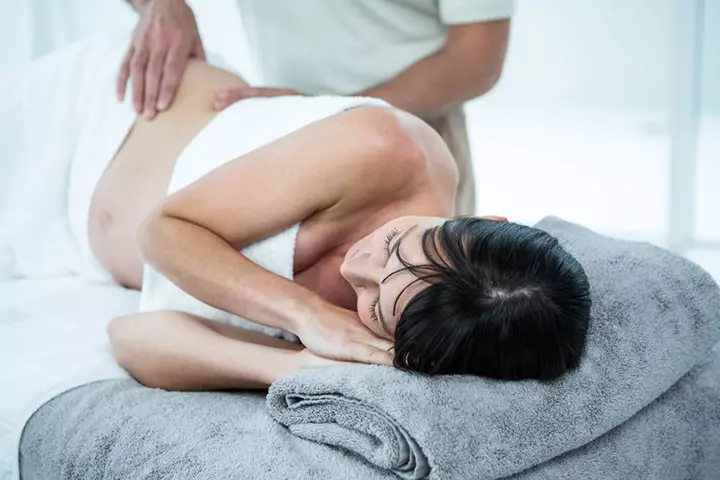
Perineal massage aims to prevent any trauma to the perineum during a normal delivery. Here are a few advantages of getting a perineal massage before delivery (2):
It increases the flexibility of the perineum and makes childbirth less painful. The flexibility of the perineal tissues prevents the trauma of the muscles.
- It increases the suppleness of the perineum, which further aids in the easy recovery of any perineal tears during delivery.
- A massage in this area increases blood circulation in the region.
- It helps you focus better to open up the perineum during delivery.
- Reduces the need for an episiotomyiAn incision made between the vaginal opening and the anus for the baby's head to come out easily during childbirth. .
- Decreases the need for medical interventions such as the use of forceps or vacuum-assisted delivery.
- Reduces post-delivery perineum pain.
- Helps soften the rigid perineum or previous scar tissues.
Moreover, if your partner helps you with the massage, it can promote emotional bonding between you. Perineal massage during pregnancy has been shown to promote improved feelings about childbirth, higher confidence and satisfaction, and a reduction in stress and anxiety (12).
A study by the University of California, Los Angeles (UCLA) Center for East-West Medicine asserts that a perineum massage puts pressure on the points that can help ease constipation, thereby relieving hemorrhoidsiSwollen and enlarged veins around the anus and rectum caused due to pressure on the rectal veins. during pregnancy (3).
Try the perineal massage after talking to your doctor, and only if you are comfortable with it. Keep reading to know when and how you can try this massage.
A mother reminisces about the birth of her son, how the complications were a little difficult to recover from, and how she changed her approach to childbirth during her second child. She says, “With my daughter, Florence, I was determined not to endure a 3rd degree again! So I practiced perineal massage daily, and this, combined with great positioning and assistance from an amazing midwife, I proceeded to have a vaginal birth with NOT EVEN A SCRATCH! Gosh my recovery was so much better (i)!”
 Point to consider
Point to considerWhen To Start Perineal Massage And How Often To Do It?
The ideal time to begin antenatal perineal massageiMassaging of the deep tissues around the vagina of a pregnant woman to minimize perineal trauma. is the 34th week of pregnancy (2)
. Based on your comfort levels and preferences, either you or your partner can perform the massage,
How To Get Started?

You may follow these steps before the antenatal perineal massage (4), (2).
- Empty the bladder
- Trim the nails and clean the hands properly
Take warm baths or use warm compresses on the perineum for ten minutes before the massage.
 Quick fact
Quick factHow To Do Perineal Massage?
First, position yourself comfortably.
Some comfortable positions to try
- Sit comfortably on a bed or sofa, with the knees bent out. Use pillows to support your back.
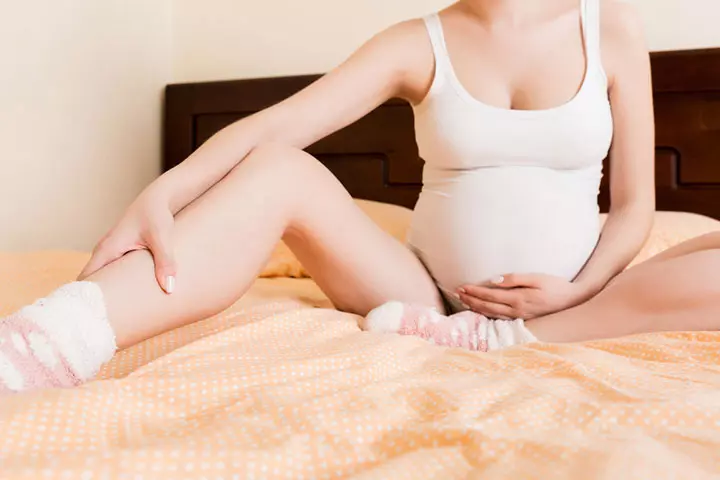
- Rest your back in a bathtub and keep one leg up on the side of the tub. Alternate with the other leg when required.
- Stand with one leg up on the stool. Alternate with the other leg.
- Sit on a toilet with legs wide open.
Technique
- Sit in a place where you will be comfortable and feel secure and uninterrupted.
- Use a mirror to familiarize yourself with the vaginal opening.
- Insert both your thumbs, around 2in (5cm) into the vaginal opening. Place them on the back of your vaginal wall, with your forefingers resting on the buttocks.
- Using your thumbs and forefingers, gently press down towards the rectum and massage for about five minutes in an ‘upward and outward’ motion to make a ‘U’ stretching pattern. As you massage the area inside the vagina, you will feel a stretching/ tingling sensation of the outer skin.
- This ‘stretching’ feeling is similar to the feeling that you experience when the perineum opens up during delivery. Hold the stretch for 30-60 seconds and then release (5). If your partner is helping you, then he must use his first and second fingers to start the massage.
- Try to relax the perineum during the massage.
- As you massage it, the perineum becomes elastic. Then, slowly increase the pressure towards the rectum. This will help you cope and relax with the pressure you will experience during labor when the head of the baby is about to come out.
- Massage as recommended for better results.
A tool named Epi-No was developed to protect the perineum from any trauma during childbirth.
However, a systematic review of this device, in nulliparousiA term used for a woman who has not had a live delivery. women, claims no significant reduction in perineum tears or episiotomy rates (6).
What Are The Contraindications To Perineal Massage?
Perineal massage is not recommended (4):
- If the gestation age is less than 34 weeks.
- If you have a case of an incompetent cervix.
- In the case of placenta previa or if there is vaginal bleeding due to any other conditions during the second half of pregnancy.
- In the case of preeclampsiaiA pregnancy complication characterized by high blood pressure, protein in the urine, and swelling in body parts. or concerns about the growth of the baby.
- In the case of thrushiAn infection caused by the overgrowth of a yeast called Candida albicans, which may cause itching, white discharge, and redness. , vaginal herpesiA sexually transmitted infection caused by the herpes simplex virus that causes itchiness and sores in the genital area. , or any other vaginal infections that may spread and worsen due to the massage.
If you feel pain at any point of massage, then stop doing it and continue it after some time. If pain persists, then inform your obstetrician/gynecologist.
In addition to the massage, you can also try other techniques to minimize the risk of a perineum tear during labor.
Tips To Reduce Perineal Tearing
The following tips help reduce the chances of perineal tear:
- Be in an upright position during labor.

- When you are in labor, start pushing as soon as you feel the contractions.
- Water birthing reduces the incidence of perineal tears (7).
- In the case of normal delivery at a hospital, apply warm compresses on the perineum.
- Do not oblige to labor induction if there is no medical emergency.
- Go for natural pain relief methods to avoid medical interventions.
Frequently Asked Questions
1. How does a perineal massage feel?
You may feel a stretch and pressure around the perineum for a few weeks when you start having a perineal massage. This feeling will eventually go away (8).
2. Does perineal massage work?
A study on 99 participants revealed that perineal massage significantly reduced the duration of second-stage labor and the need for episiotomies. Therefore, it is believed to reduce perineal damage during childbirth (9).
3. Can I bleed after a perineal massage?
No, if you bleed after a perineal massage, you may have ruptured some membranes or have an infection such as vaginal herpes or thrush. In such cases, you should stop massaging and see a doctor (4).
Practicing perineal massage from the 34th week of pregnancy will help you improve your perineum flexibility, allowing you to have a smoother, less painful vaginal birth with no perineal trauma or tear. Prior to the massage, trim your nails and empty your bladder. Also, you can take a warm bath or use warm compresses on the perineum for at least 10 minutes. Then get on to a comfortable posture and follow the right procedures.
Infographic: Other Ways To Prevent A Perineal Tear During Childbirth
Perineal tear and the need for episiotomy can be prevented by stretching the muscles during delivery. You may follow these measures as per the midwife’s or the doctor’s instructions depending on the fetal wellbeing and other factors. Go through the infographic to determine how to prevent perineal tears and avoid an episiotomy during labor.
Some thing wrong with infographic shortcode. please verify shortcode syntax
Perineal massage is a technique used to help prepare the body for childbirth. Learn how it can help make labor easier and more comfortable in this video.
Illustration: How To Do Perineal Massage And What Are The Benefits

Image: Dalle.E/MomJunction Design Team
Personal Experience: Source
MomJunction articles include first-hand experiences to provide you with better insights through real-life narratives. Here are the sources of personal accounts referenced in this article.
i. Perineal massage.https://boobtofood.com/perinealmassage-2/
References
- Chris Kettle Susan Tohill; (2008); Perineal care.
https://pubmed.ncbi.nlm.nih.gov/19445799/ - Antenatal perineal massage.
https://www.imperial.nhs.uk/-/media/website/patient-information-leaflets/physiotherapy/antenatal-perineal-massage.pdf?rev=0344c02dc3a94823bfe690b6885e2ec1 - Perineal Massage Can Help You Poop.
https://www.proctologyinstitute.com/2017/05/19/perineal-massage-can-help-you-poop/ - Perineal massage.
https://brochures.mater.org.au/brochures/mater-mothers-hospital/perineal-massage - Perineal massage in pregnancy.
https://www.nct.org.uk/pregnancy/worries-and-discomforts/common-discomforts/perineal-massage-pregnancy - Luiz Gustavo Oliveira Brito et al.; (2015); Antepartum use of Epi-No birth trainer for preventing perineal trauma: systematic review.
https://pubmed.ncbi.nlm.nih.gov/25851585/ - WATER BIRTHS – DOES IT REDUCE PERINEAL TEARS AND PROTECT THE PELVIC FLOOR?.
https://www.ics.org/Abstracts/Publish/47/000693.pdf - How to do perineal massage: a step-by-step guide.
https://www.nct.org.uk/pregnancy/worries-and-discomforts/common-discomforts/how-do-perineal-massage-step-step-guide - Farideh Akhlaghi et al.; (2019); Effect of Perineal Massage on the Rate of Episiotomy.
https://www.ncbi.nlm.nih.gov/pmc/articles/PMC7072029/ - Perineal Massage During Pregnancy.
https://americanpregnancy.org/healthy-pregnancy/labor-and-birth/perineal-massage-pregnancy/ - Prenatal Perineal Massage.
https://www.sahealth.sa.gov.au/wps/wcm/connect/708bce01-a52d-4142-87e1-79c3ca4d51b7/Prenatal+perineal+massage+consumer+health+information+-+Physiotherapy+FMC.pdf?MOD=AJPERES&CACHEID=ROOTWORKSPACE-708bce01-a52d-4142-87e1-79c3ca4d51b7-o9tziG1 - Ellington JE et al.; (2017); Antenatal Perineal Massage Improves Women’s Experience of Childbirth and Postpartum Recovery: A Review to Facilitate Provider and Patient Education on the Technique; Journal of Women’s Health, Issues, and Care
https://www.scitechnol.com/peer-review/antenatal-perineal-massage-improves-womens-experience-of-childbirth-and-postpartum-recovery-a-review-to-facilitate-provider-and-pa-Cpgl.php?article_id=6038
Community Experiences
Join the conversation and become a part of our nurturing community! Share your stories, experiences, and insights to connect with fellow parents.
Read full bio of Dr. Shalini MA
Read full bio of shreeja pillai
Read full bio of Rebecca Malachi
Read full bio of Dr. Joyani Das







